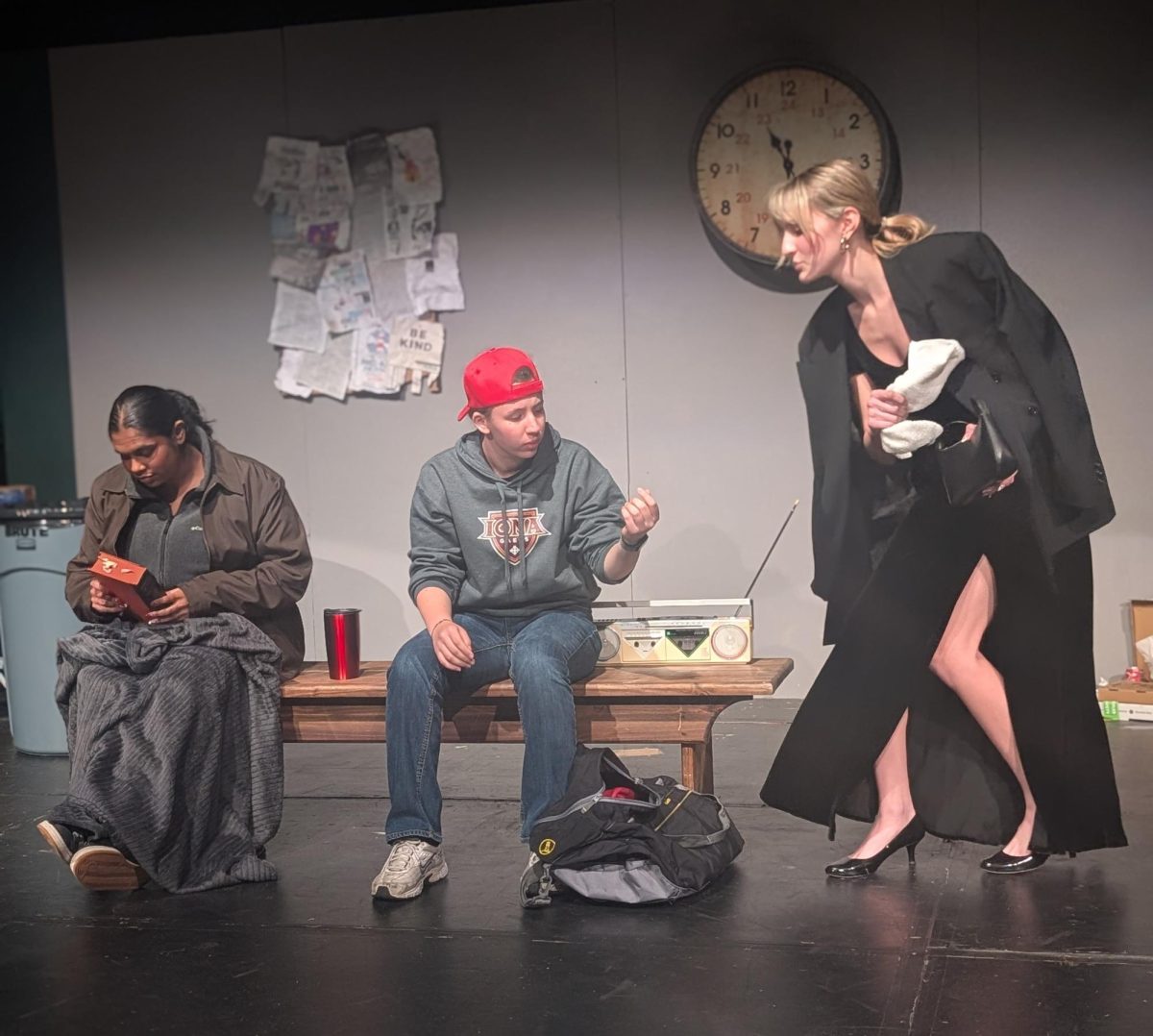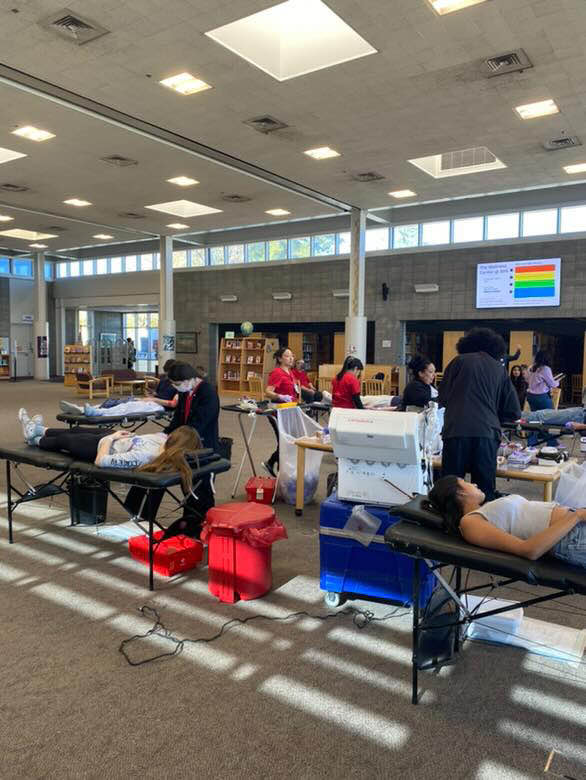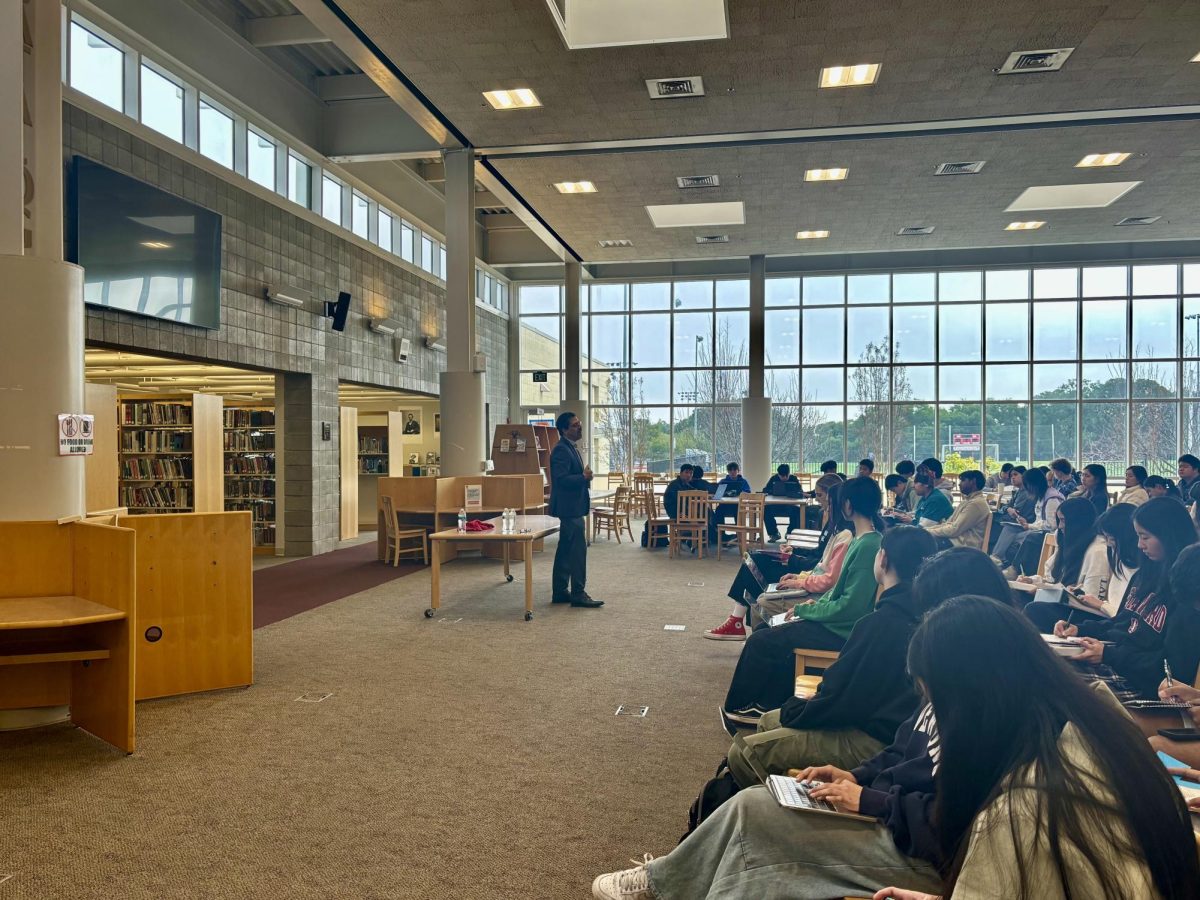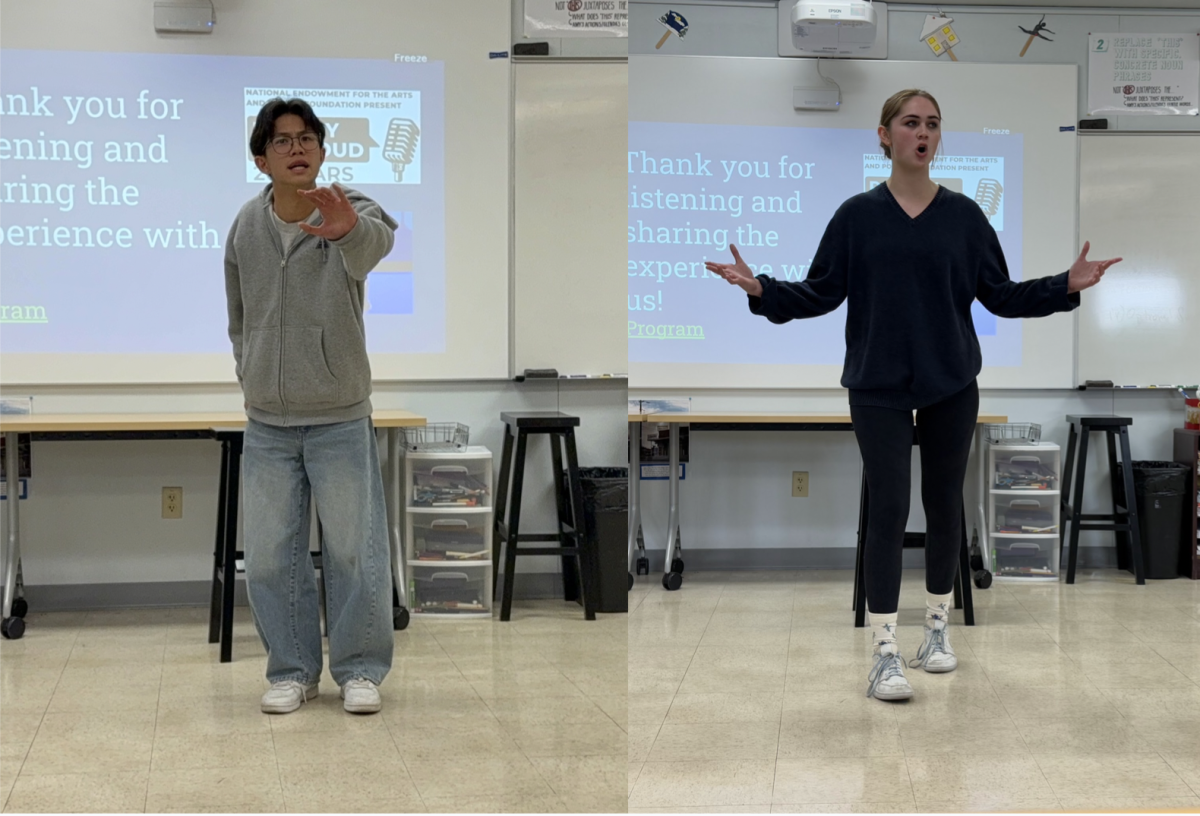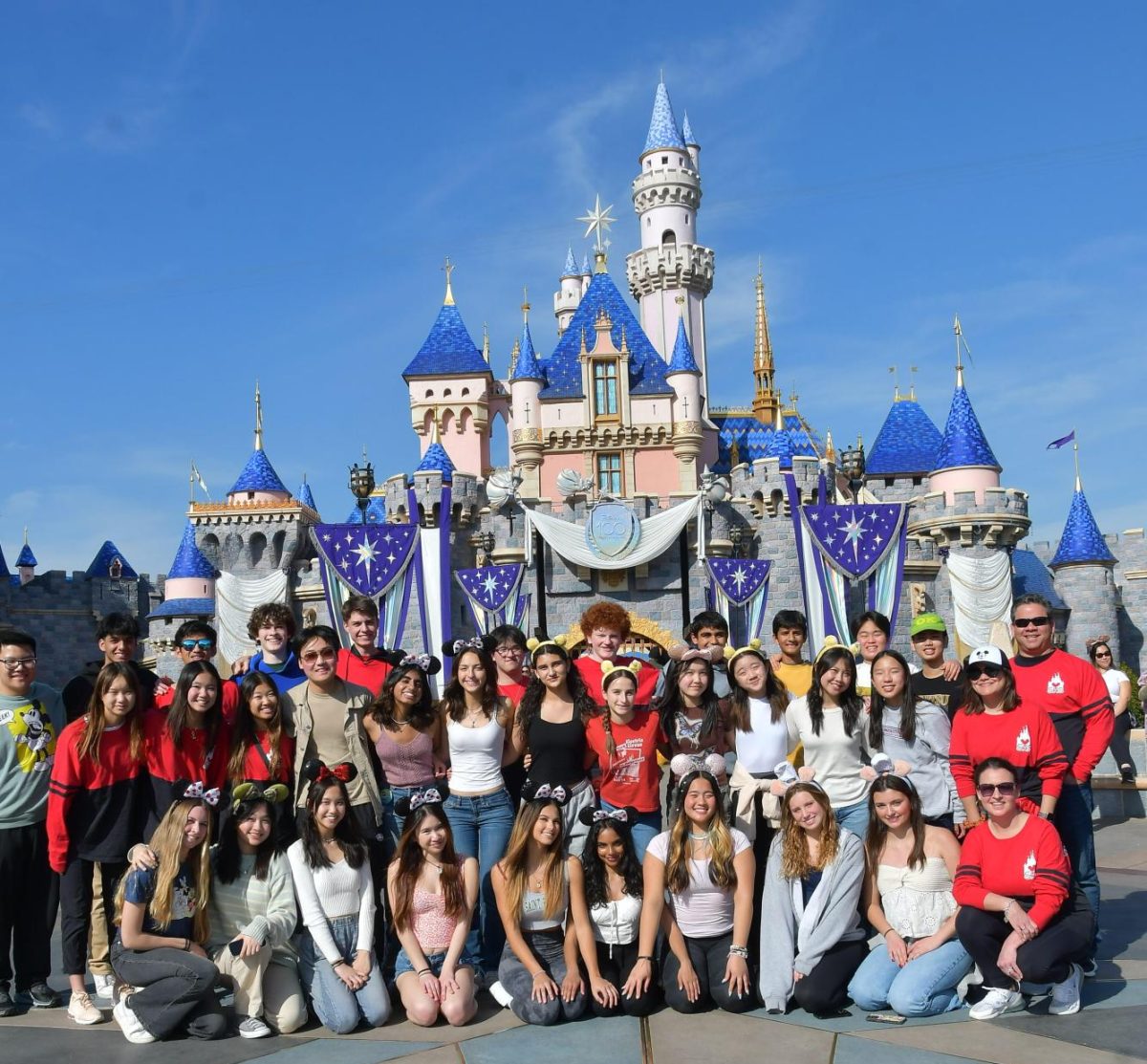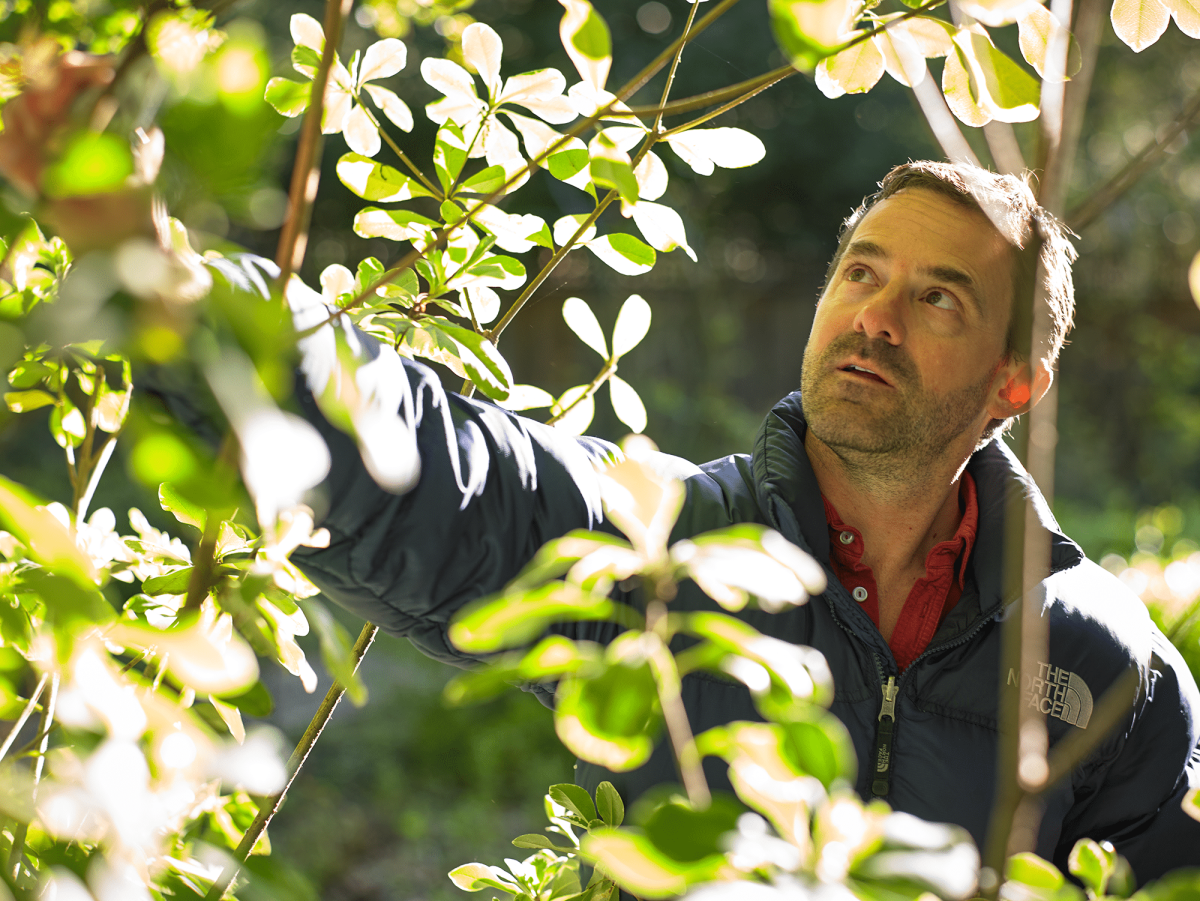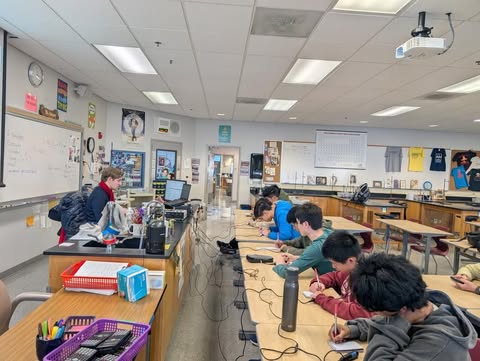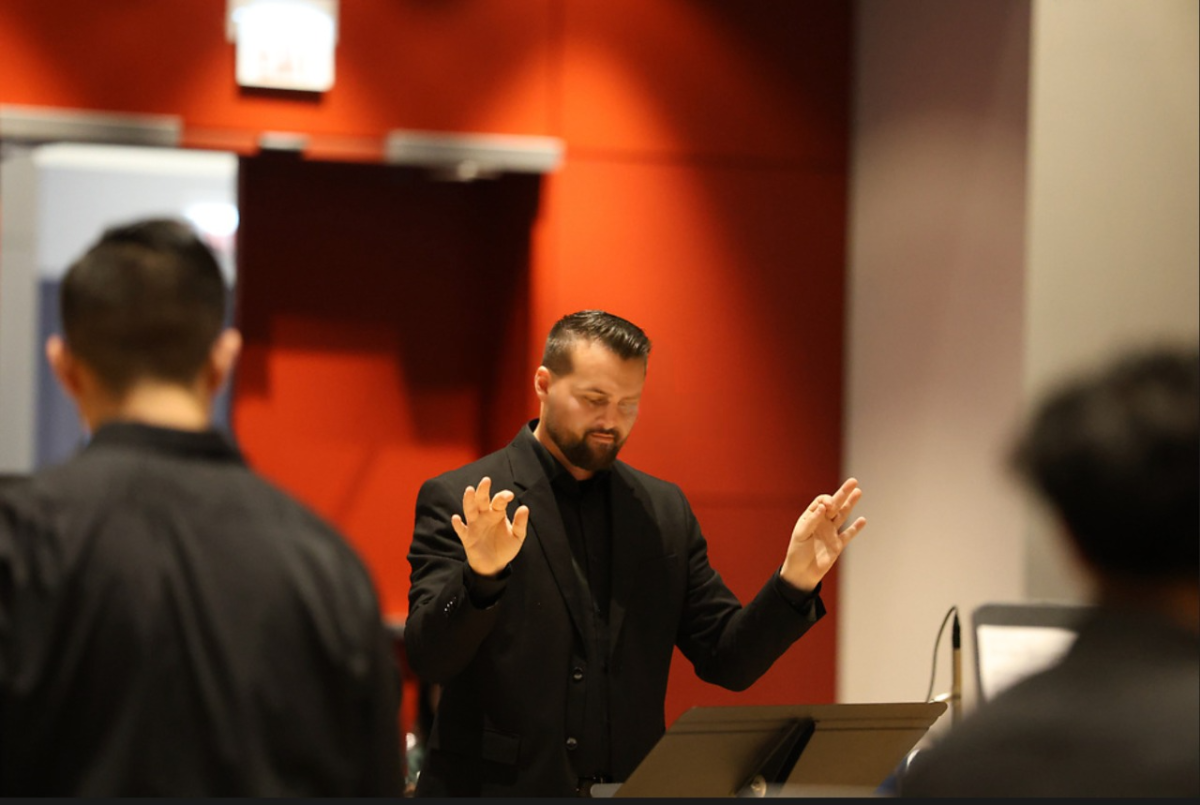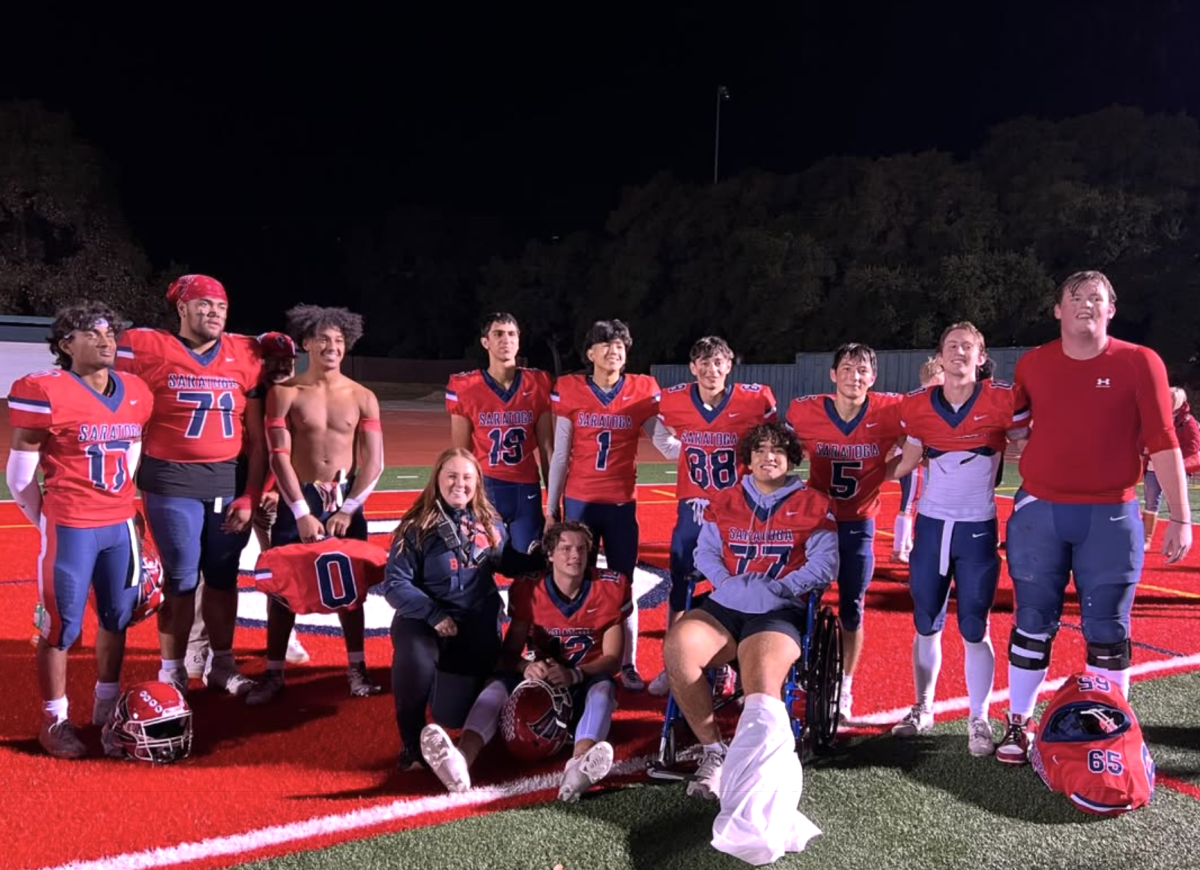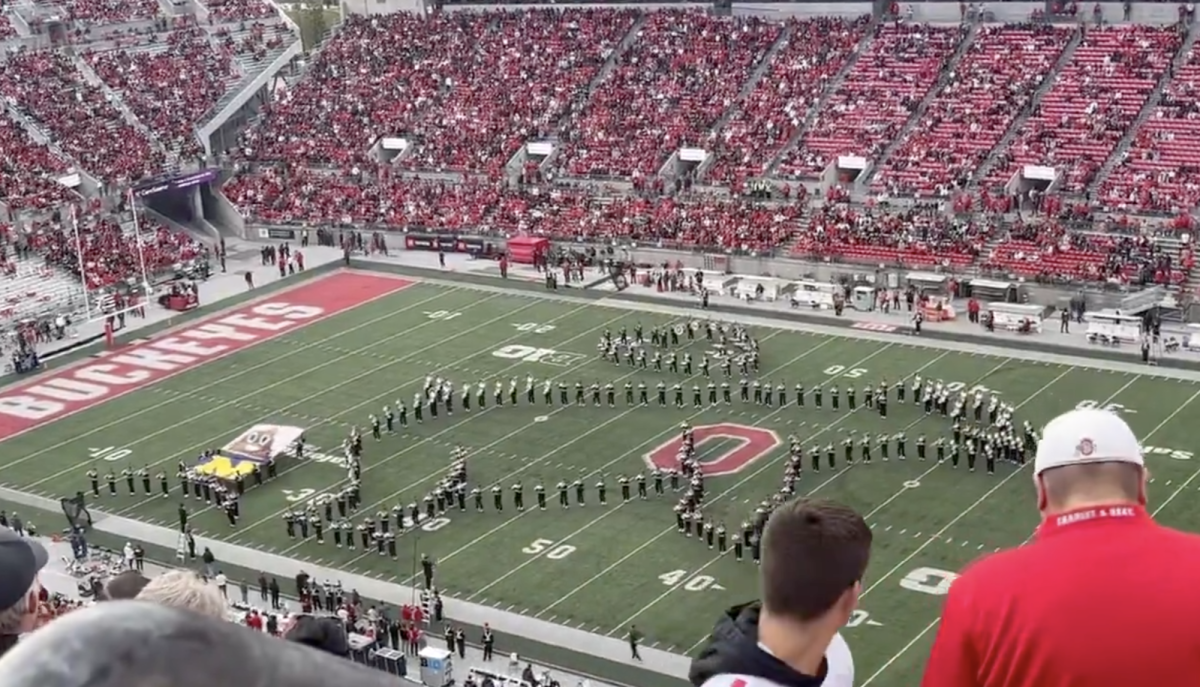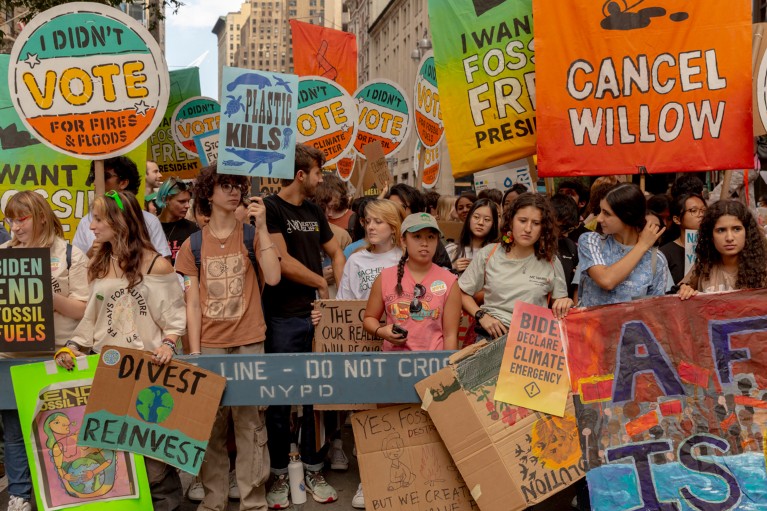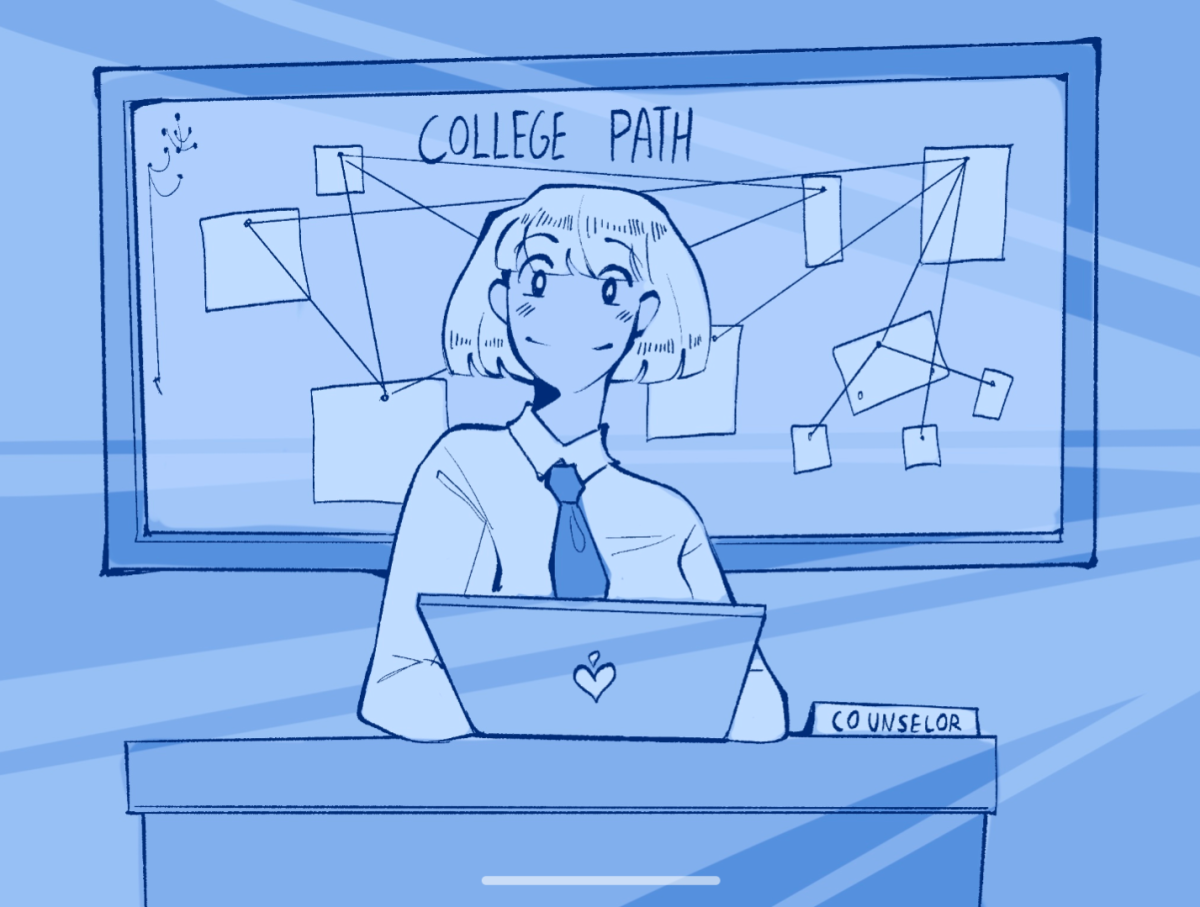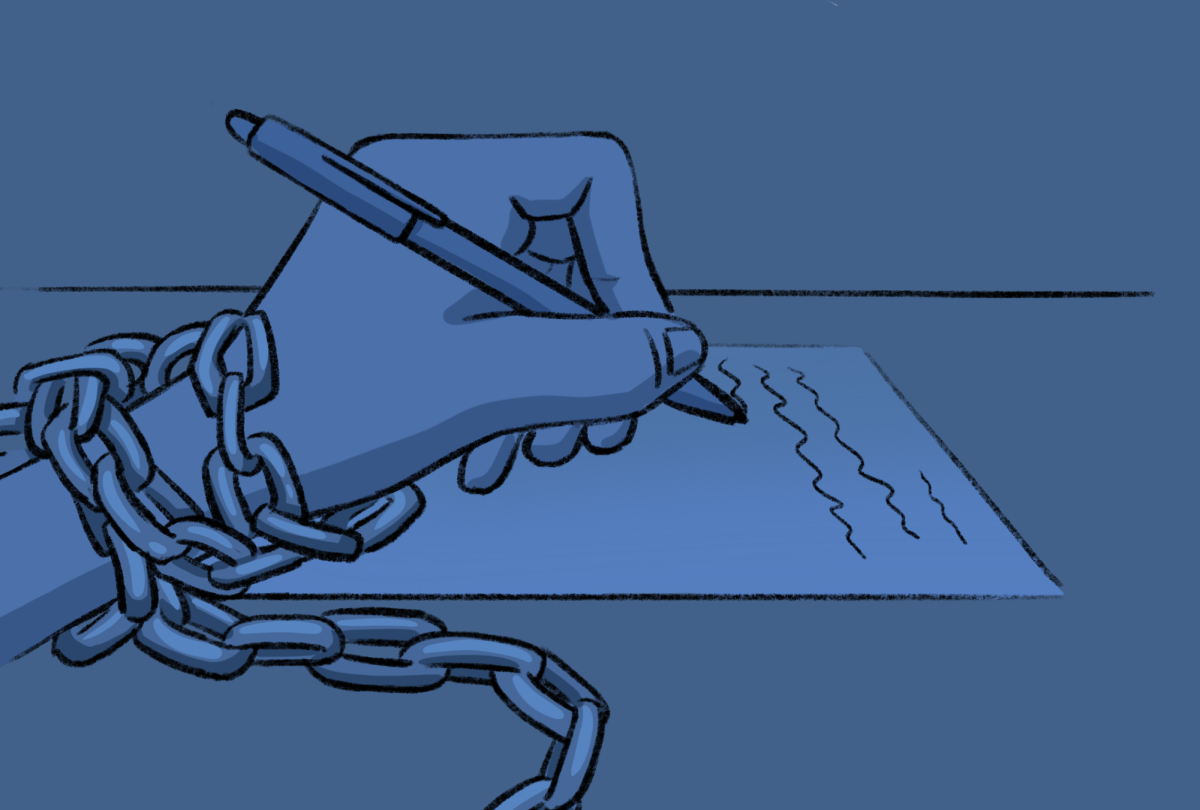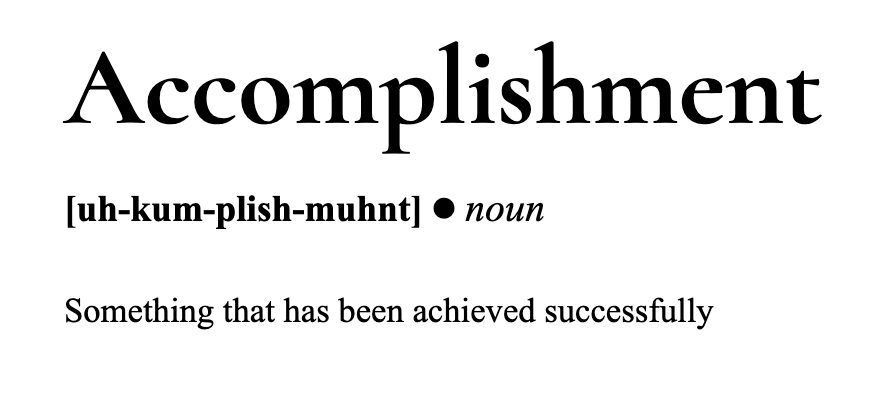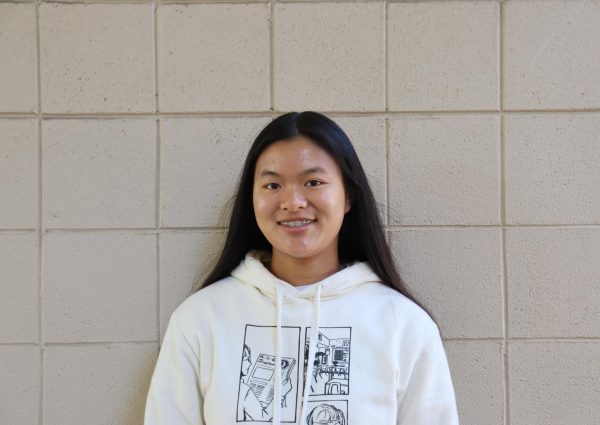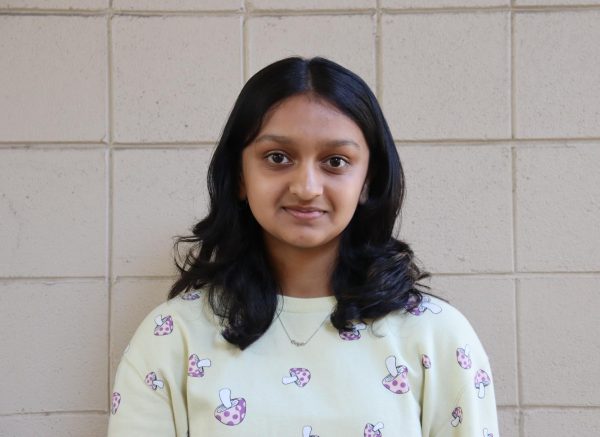Even the most trivial and uncomplicated relationships can have their magical moments.
That was the premise behind senior Ryan Backhus’ project “A Stop in Time,” a play that synthesizes various emotions and elements of relationships in a vignette-style series, with all scenes tied to the same bench at a train station.
This year, Backhus was the first of four students in the Drama 4 Honors class to present their required senior capstone project, which involves directing a production and synthesizing the process in a production paper. Backhus’s show, which was about an hour and a half in length, ran from Dec. 13-14 in the Thermond Drama Center.
Backhus had five crew members and nine actors — all of whom were also one of the Drama classes. He cast his play around mid-October.
Backhus has written and directed plays in the past, including “Kids Come Home,” which won first place at the Northern California Play Festival in 2023. For “A Stop in Time,” he drew inspiration from reflecting on his own life. As a senior preparing to move into a new chapter of his life, Backhus decided to center this play around the theme of the passage of time.
“The main message is that time is going to pass regardless of what we do,” Backhus said. “The best thing to do is take it as it comes and accept time as this force that’s just gonna keep moving forward — not try to fight against it or take too much control of it.”
Seven vignettes bring together the lives of a subway station
Military veteran Avery Oswald, a role played by junior Nila Venkataratnam, encounters young Sammie Smith, played by sophomore Evangelina Stepanchenko, reflecting on his nostalgic past. Sammie leaves the city but makes Avery promise to meet again.
Couple McKenna Dean and Peter Bakerson, played by senior Chloe Mantle and freshman Tessie Berger, argue about their relationship. Peter points out his college aspirations, but McKenna throws up instead of responding. Worried about their futures, Peter breaks up with her.
Avery listens as governor Frederick Greenswick, played by junior Ben Davies, goes through a midlife crisis. Frederick brags about his heroism and valor yet eventually opens up about being unable to care for his second child.
Despite wildly different interests, aspiring musician Colby Neel and bookworm Olivia Schulz, played by sophomore Aradhita Singh and Mantle, meet and learn to make room for each others’ dreams.
Tina “Greenswick” Fetzaldi and Regie Filkins recall hesitantly kissing after a dare and awkwardly avoiding each other since. Realizing their compatibility, the reunited lovers decide to give their relationship a second chance.
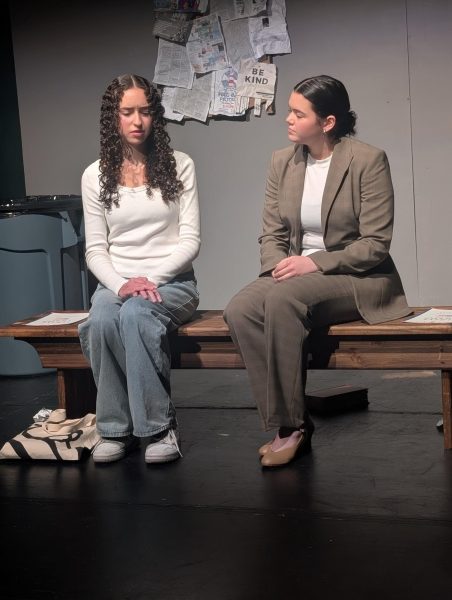
Fast forward years into the future, Sammie returns with public office candidate Lilian Brunswick, played by senior Katie Berger. Sammie, now more philosophical and confident, brings inspiration ideas for new developments to Lilian.
The final scene ties in elements from each vignette, connecting the web of relationships. Avery and Sammie follow through on their first promise to meet again, and the ending epitomizes the passage of time in one, satisfying ending.
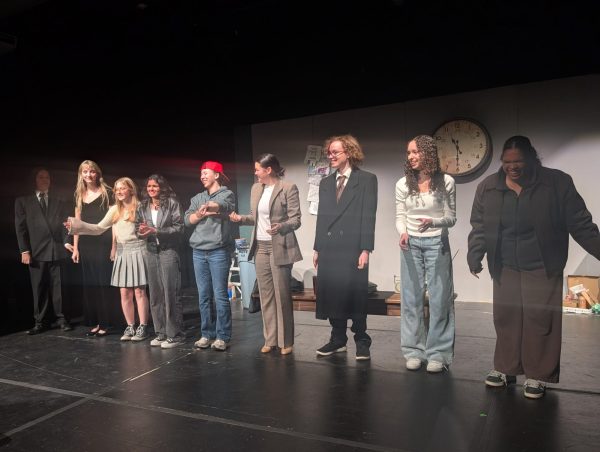
The characters: Writing, editing and casting
The first sparks of “A Stop in Time” emerged in the spring of 2024, though summer plans delayed most of Backhus’ writing process until August and September.
His initial idea was actually completely different: Backhus wanted the theme of the passage of time to be placed in a historical fiction story. After pivoting to a more modern setting, he first developed Sammie — a character borrowed from a New Works Festival production from the previous year — as a very anxious, family-oriented character.
Both Sammie and Avery are well-rounded characters; Sammie is self-conscious about her stuttering problem and has a quiet demeanor, conveyed through her lack of eye contact and timid posture. On the other hand, Avery is more worn and hopeful, as detailed makeup highlights her age and tiredness.
Companions like Peter and McKenna were easily written as well, while those such as Colby and Olivia came to him last. For example, McKenna’s well-timed interruptions destroy the theme of preservation and eternal happiness in the face of new ideas. Reggie’s character also provided some much needed humor to lighten the mood.
During casting, Backhus observed Davies as Fred taking on a similar persona to Edward Markely, a company manager from “Radium Girls.”
“The way [Davies] played Fred, was not at all how I wrote Fred, but it was a really interesting take on the character,” Backhus said. “It was kind of like how he played Markley, where he was a little bit slimy. The way he did that was really fun and humorous. I liked it.”
Altogether, the process of getting the dialogue to flow smoothly required many iterations of the script — Backhus went through about five full drafts before finalizing it.
Though a few characters didn’t make the cut, he finished a complete draft by early October and, following auditions and casting, he hosted read-throughs where he used input from the actors to correct syntax, make final edits and polish the piece. The cast and production staff then made the most of the remaining six weeks, pushing through rehearsal and set development.
Production: Set design and costumes
Since the play was staged in a very practical setting, Backhus took a lot of household items and put together the set in the days leading up to show day. Echoing the fall play “Radium Girls,” the centerpiece — a large, deteriorated clock — loomed over the subway station.
Backhus said the piece was sitting in the basement as junk left over from the previous property owner. When he texted his friend’s mom asking to borrow it, she was a bit confused and didn’t even know the clock was there.
“The biggest piece of set design that I thought the most about was the clock, because I really wanted a clock that looked bold but also believable enough to be in a subway,” Backhus said. “I remember one day I walked into my friend’s house and I saw the clock on his wall. And I was like, ‘Dude, this clock looks perfect.’”
Reflections and future aspirations as a screenwriter
“A Stop in Time” was Backhus’ first experience with truly directing a longer show. Previously, in smaller shows like those for the New Works Festival, he hadn’t been as involved in working with actors directly. However, this particular script reflected his self-described “wordy” writing style, where a lot of context and emotions were expressed through the content of characters’ speech, so Backhus felt he needed to push for more fluency.
“With this play that was much longer and a much bigger cast, I feel like I needed to be almost more assertive with my actors, because I really needed to get them to know the words,” Backhus said.
In college, Backhus plans to lean more into movie writing than playwriting or theater since he said screenwriting doesn’t have the practical limitations like theater — where scenes can’t shift in fractions of a second, sets have to be physically moved, and time jumps are more difficult to portray — does.
“When I’m writing for screen, I think less about the practicality of sets and more about characters and stories and shots and angles and the kind of thing you get on the screen,” Backhus said.
He still acknowledged the amount of growth he’s had just from his time in the drama department, though, and he expressed openness to similar chances in the future.
“If the opportunities arise, I definitely would consider directing in the future — I thought it was a great experience and I think that the acting was really good, and we all worked well together,” Backhus said.

